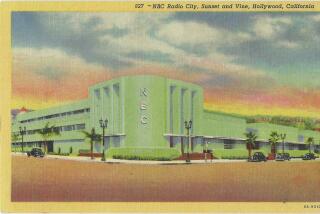Long-Distance Carriers Seeking to Ring Up Profit From Local Toll Calls
The expected battle for the local home phone market has fizzled, but long-distance carriers have shifted their focus to another lucrative front: local toll calling.
These calls represent the confusing middle ground between free local dialing and long-distance. Generally, local calls that travel more than 12 miles are considered toll calls, but the actual charge is based on distance and the oddball geography of the stateâs calling zones.
The stakes are especially high in California. The state is the largest local toll market in the country, with customers spending more than $2 billion a year and making a quarter of all such calls in the U.S.
Last week, AT&T; Corp., Sprint and MCI WorldCom asked California regulators to allow customers to âsubscribeâ to a local toll carrier--as they do with long-distance. More than 30 states have adopted, or soon will adopt, such a plan.
To tap a competing carrier for local toll calls, a customer must dial that companyâs seven digit code (10-1X-XXX), followed by the phone number. Customers who dial 1 and a phone number are automatically routed to their local phone carrier.
GTE customers already have the option of subscribing to an alternative local toll carrier without extra dialing. Thatâs because GTE is not a Baby Bell company and is not as heavily regulated as the phone companies spun off from AT&T.; But the same is not true for PacBell, the stateâs largest phone company.
For customers, the choice can add up to big savings.
âIt is meaningful, and for some people, itâs very meaningful in terms of the amount of money involved,â said Brett Azuma, a vice president at Dataquest, a San Jose research firm. âYou need only look at Pacific Bellâs financial report to see that a good chunk of its revenue and profit comes from local toll.â
Since the dial-around system was established almost four years ago, California businesses have saved vast sums on their local toll calls by comparing price plans and using automated systems that eliminate the need for extra dialing.
The stepped-up competition for business customers has pushed all carriers to lower their per-minute prices on local toll calls.
In most cases, the lower prices also are offered to residential customers. But many customers are unaware of their options, while others are discouraged by the extra dialing and daunting complexity of identifying which calls are considered local toll.
PacBell estimates that about 55% of its local traffic from business customers in California has shifted to competitors. The company says it has lost only about 10% of its residential toll calls to rivals, although observers believe the percentage is even lower.
PacBell quotes an average toll-call price of 6 cents to 7 cents a minute. But special plans with monthly fees can offer per-minute prices as low as 5 cents. AT&T; says its toll prices range from 5 cents to 7 cents a minute.
Because prices vary widely, customers with a good long-distance plan can find they are paying higher per-minute rates on a call from Los Angeles to Irvine than from Los Angeles to New York.
âItâs well worth consumersâ time to take a look at whatâs on the table for them,â said Fred Voit, an analyst at Yankee Group, a Boston research firm. âIf itâs a good rate, itâs even worth dialing around.â
Regulators donât dispute the potential advantages of allowing consumers to subscribe to carriers other than the incumbent phone company for local toll calls.
But the dispute has become a legal one.
âPre-ordering [local toll] would make it easier for carriers to compete on a more level playing field, but Iâm not sure thatâs the question before us,â said Fassil Fenikile, telecommunications advisor to the California Public Utilities Commissionâs Josiah Neeper, who is reviewing the matter. âThere is a competitive balance we have to keep in mind.â
Last year, the state PUC ruled that PacBell would be unfairly disadvantaged if it were forced to give rivals equal access to its toll-call customers before it earns access to the long-distance market.
Under the Telecommunications Act, PacBell and the other Baby Bells must pass a competition check list before winning entry into long-distance--and so far, none of the companies has earned a passing grade from regulators.
But the Telecom Act, which itself is the subject of legal challenges, also requires the local phone companies to grant competitors âequal accessâ to their toll-call customers by Feb. 8, 1999--even if they havenât yet gained access to the long-distance market.
Now, state regulators must weigh the conflicting rulings. Neeper, who heard arguments from both sides last week, is expected to make a preliminary decision within a few weeks.
Accelerating competition in the local toll market would surely be a boon for consumers. But it also could disrupt the stateâs complex rate system, which has traditionally set toll prices higher to subsidize a lower monthly fee for basic phone service, regulators and others have said.
âThe bottom line is that if something goes down, something else has to go up [in price],â Azuma said.
In addition, PacBell argues that giving long-distance companies full access to toll customers would ultimately take away their incentive to compete for basic local phone service.
*
The Los Angeles County Board of Supervisors, the Los Angeles County Sheriffâs Department and a state public safety group have voiced objections to PacBellâs bid to increases fees for directory assistance and two other phone services.
Citing their need for cheap and efficient access to 411 information and two lesser-known features--busy line verification and emergency interrupt--the groups said PacBellâs higher rates would hinder their work.
âThese are operator services relied upon each day by 911 operators and public safety dispatchers in the performance of their duties, both routine and emergency,â said Travis Williams of the California Public-Safety Radio Assn. at a California Public Utilities Commission hearing in Pasadena last week.
PacBell is seeking a fourfold price increase for emergency interrupt--which allows an operator to cut in on a call in progress. Williams said this service is key to public safety communicators and other emergency providers. âPublic safety should not be compromised by the profit motives of a telecommunications company,â he said.
PacBell wants to increase its current local directory assistance charge from 25 cents to 50 cents per call, with approval to raise that price to a maximum of $1.10. The company also has proposed a cut in the number of free 411 calls residents get each month to three, down from five. Businesses would lose their current two free requests per month. In addition, PacBell is seeking 400% price hikes for busy-line verification (from the current 50 cents per call to $2 per use, with a $3 maximum) and emergency interrupt (a jump from $1 to $4 per use, with a $5 ceiling).
PacBell, which hasnât raised the price of 411 calls since 1984, said it needs to charge more to cover its costs. The company said few residential customers would be affected by the change and that it has no intention of raising its prices to the proposed maximums.
*
Times staff writer Elizabeth Douglass can be reached via e-mail at [email protected].
More to Read
Inside the business of entertainment
The Wide Shot brings you news, analysis and insights on everything from streaming wars to production â and what it all means for the future.
You may occasionally receive promotional content from the Los Angeles Times.










